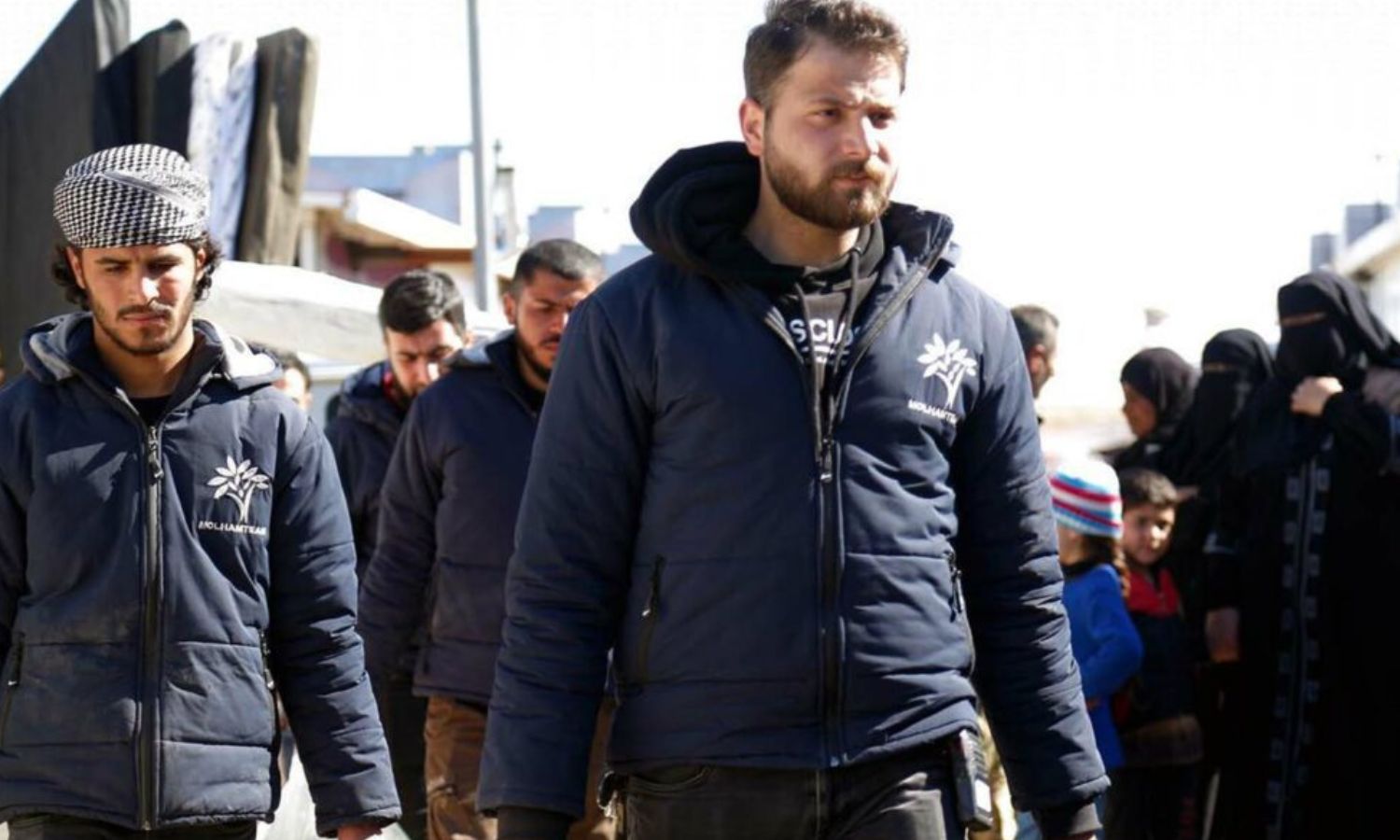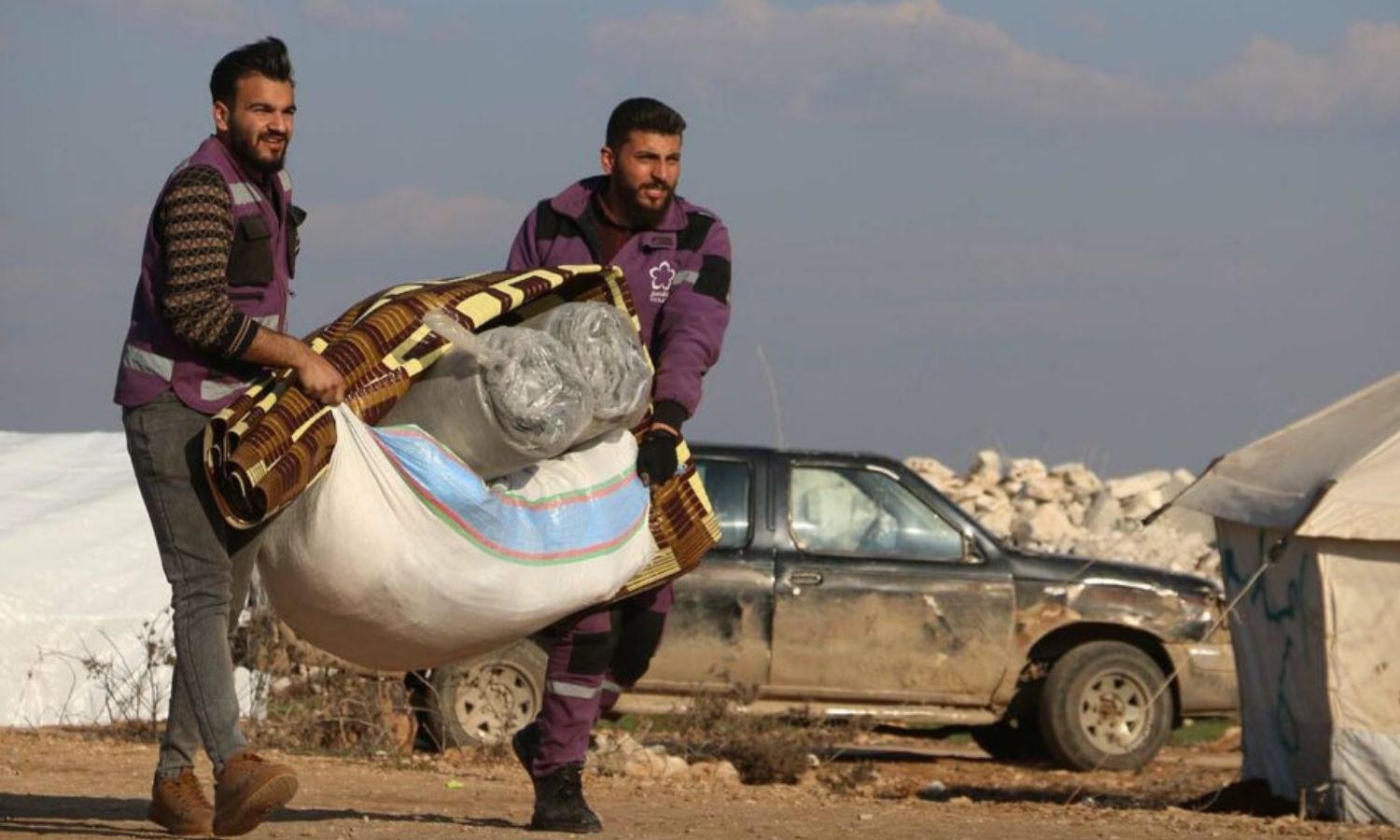



Enab Baladi – Lujain Mourad
“The team that was recording the victims has become a victim,” the head of the Syrian Network for Human Rights (SNHR), Fadel Abdul Ghani, described the situation of the organizations’ cadres after the earthquake that hit Syria and Turkey on February 6, leaving more than 50,000 people killed.
While most organizations have administrative offices in southern Turkey, their activities are concentrated in northern Syria, which made the impact of the disaster even greater and limited their ability to work.
This prompted the “Do not suffocate the truth” team to launch a campaign to help organizations by securing volunteers who are able to fill the void left by the affected cadres and offices.
While fieldwork is taking place in Syria, organizations are managing operations, programs, and logistics from their offices in Turkey, according to Syrian doctor and humanitarian activist Mohamad Katoub.
Katoub added that the current situation imposes administrative tasks on the employees of the organizations in Turkey, but the damage to their offices and warehouses impedes this, pointing to the possibility that the effectiveness of these cadres will decline for a long time.
Many organizations’ offices in southern Turkey were damaged, including the offices of the Molham Volunteering Team, Violet organization, and the Syrian American Medical Society (SAMS).
Marcelle Shehwaro, a volunteer in the “Do not suffocate the truth” team and an activist in the humanitarian field, told Enab Baladi that the organizations’ loss of their offices and equipment, especially in southern Turkey, limited the organizations’ ability to provide an emergency response.
Shehwaro indicated that the existence of a real disaster in Turkey hindered logistical operations, as Turkey’s priority was to respond to those affected in the south.
For his part, Abdul Ghani, head of Syrian Network, told Enab Baladi that many of the team’s departments had been severely damaged, especially in Turkey.
Most of the SNHR staff are distributed between southern Turkey and northern Syria, which rendered it incapable of responding to the earthquake disaster and documenting the victims with the required speed and effectiveness, according to Abdul Ghani.
This forced the SNHR workers who were not affected to assume the responsibilities of their affected colleagues so that the local observatory group could complete its work.

Volunteers from the Violet organization responding to the needs of families affected by the earthquake – February 18, 2023 (Facebook/Violet organization)
Through social media, many Syrian organizations have mourned dozens of volunteers during the past few days, which showed the size of the human losses left by the earthquake among the cadres of the organizations.
Activist Marcelle Shehwaro believes that the impact of the disaster on the work of the organizations was multiplied by human losses.
She added that it was the first time that the disaster was of this magnitude, as the effectiveness of the cadres decreased due to the human losses among the volunteers and workers in the organizations, in addition to their families.
Most of the organizations’ cadres’ relatives were subjected to varying degrees of harm, which rendered them unable to complete their duties as required, according to Katoub.
The initiative launched by the “Do not suffocate the truth” team aims to secure volunteers temporarily to carry out tasks in which the workers are not required to be from the organizations’ cadres, according to Dr. Katoub.
He added that anyone with experience is able to provide assistance by allocating specific hours per week to provide services within his/her expertise to help organizations and reduce potential randomness if organizations continue in this situation.
Shehwaro said that the idea of the campaign came from the existence of a refugee human bloc that is unable to provide what meets the need financially but is able to bear the administrative and organizational burdens.
The initiative is related to the belief of the “Do not suffocate the truth” team in the existence of human energy capable of carrying out basic tasks, and they can be relied upon.
The team is responsible for communicating with volunteers, while Dr. Katoub is responsible for coordinating with organizations to find out their needs, according to Shehwaro, pointing out that there are many volunteer requests from different regions.
In response to the requirements of the reality left by the Syrian revolution since 2011, dozens of civil society organizations have emerged in Syria, and an increasing number of organizations have emerged in the “liberated” areas to fill the void left by the absence of the state and to meet the needs of the regions in various sectors.
Among the most prominent emerging organizations is the Syria Civil Defense (SCD), also known as the White Helmets, a rescue organization that has worked since its inception to respond to distress calls, which has repeatedly made its cadres a target for military operations by the Syrian regime, and turned many volunteers from rescuers into victims.
The security and governance reality in Syria forced many organizations to establish offices in the Turkish border states with Syria and in the various asylum countries.
About 12 years after the start of the Syrian revolution, thousands of volunteers work in various fields and from separate regions within civil society organizations in various work sectors.
The number of victims of the devastating earthquake in northern Syria has reached 2,274, according to the Civil Defense. Meanwhile, the death toll from earthquakes in Turkey has exceeded 45,000, in an “indefinite toll.”
The White Helmets estimated the number of families that were displaced as a result of the earthquake in northern Syria at about 40,000 families, while the number of completely destroyed buildings reached about 550, and more than 1,570 buildings were partially damaged, in addition to hundreds of cracked buildings.
While there are no accurate statistics on the number of Syrians affected by the earthquake in Turkey, the number of Syrians residing in the affected areas shows the scale of the disaster, as the number of Syrians in southern Turkey before the disaster reached nearly 1,750,000 people.
if you think the article contain wrong information or you have additional details Send Correction